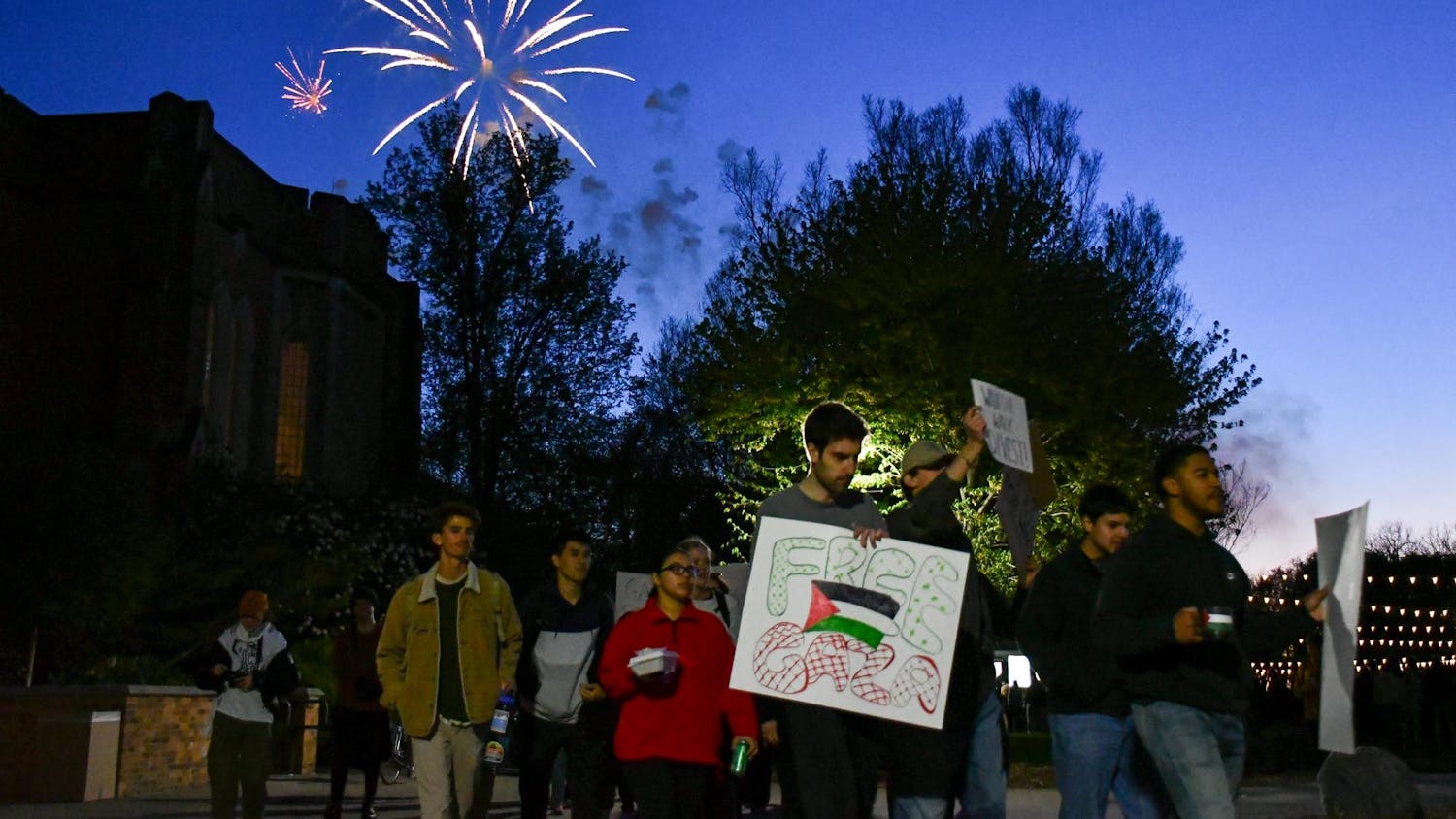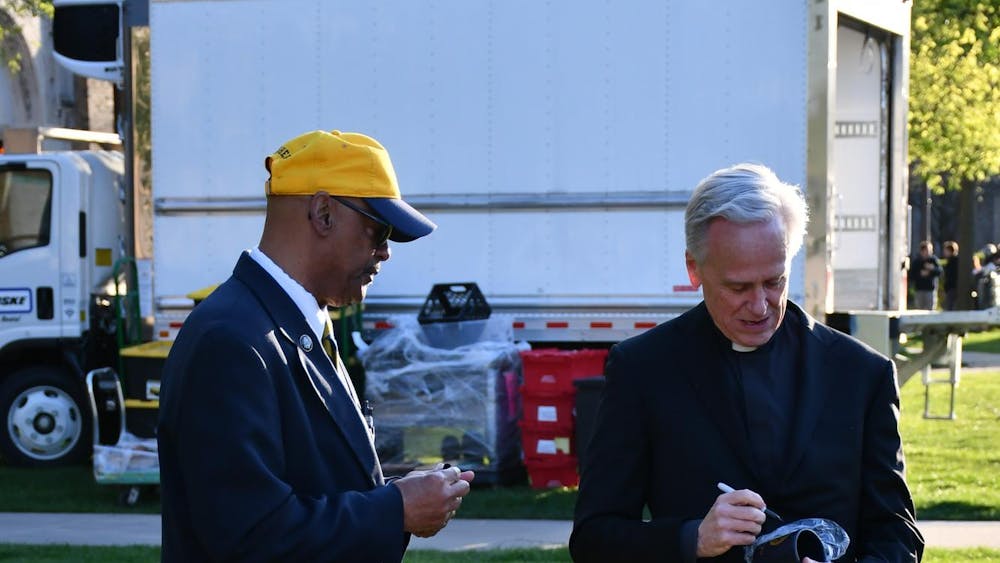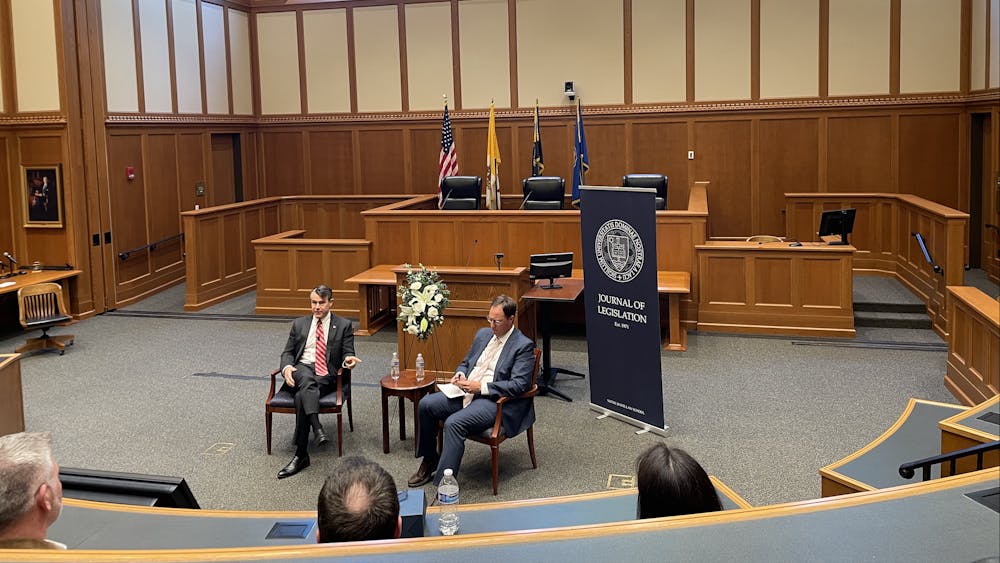After last week’s closed meeting, in which the Notre Dame senate heard and declined to overturn an appeal regarding the sanction of the Dugan-Pozas Garza ticket, it reconvened for its regular programming last night. The agenda included further debate over the allocation of funding between Student Union organizations and the Club Coordination Council (CCC).
First, the senate heard a presentation from senior director of Campus Dining Chris Abayasinghe, who spoke over the changes to come to meal plans for the undergraduate student body next fall.
“We began this journey roughly four years ago,” Abayasinghe said. “What we heard were some common themes, and I think this also coincides with the announcement in 2017 about enhancing the on-campus residential communities including free laundry and the meal plans.”
Abayasinghe said the decision to offer more meal plan options with flex points rollover and block meal plans came from the realization of two things: the value students see in flex points and how many meal swipes students have left over at the end of each week.
After Abayasinghe’s presentation, the senate returned to debate over Resolution SO1290-27, which called for clubs to receive more funding. If passed, the resolution would allocate 46% of funds available from the Financial Management Board (FMB) to the CCC and 53% of funds to the remaining Student Union organizations. Currently, the CCC receives 40% of available funds and 59% goes to Student Union organizations.
The 6% change was the cause of much tension in the questioning and debate period two weeks ago during the Feb. 5 senate meeting, in which the debate period was postponed. Wednesday’s meeting proved much the same. Approximately a year ago, the student senate debated a similar resolution and ultimately rejected it.
Senior and CCC president Jordan Isner started the debate by encouraging those in attendance to try to remain ”unbiased.” He then presented a number of statistics in favor of the resolution, citing the surplus of unspent funds spent by the Student Union over the last three years. Not accounting for deficits, the Student Union ran a surplus of $51,323 for the 2018-2019 year.
“I didn’t subtract out the deficits because Student Union boards shouldn’t be running deficits,” Isner said.
Student body vice president Patrick McGuire added that the Student Union board had a roughly $30,000 deficit last year, which would be subtracted from the $51,323 Isner presented.
Christine Arcoleo, Student Union treasurer and senior, who helped draft and sign off on the resolution, explained what happens to funds that are not spent each year.
“[The surplus] can be rolled back into the endowment and it can earn interest to be used in the following year,” Arcoleo said. ”So basically it’s OK to have some leftover money to go back into the endowment, but it is a problem if there’s a huge surplus not going to any clubs or organizations.”
Isner also cited direct quotes from club leaders who told him their clubs need more funding.
Junior Class Council president Sam Cannova then took to the floor to argue against the resolution. Cannova explained the $26,508.25 surplus from the Student Union is due to how the Hall President’s Council (HPC) uses its funds.
“For the last three years, HPC has run a $35 — $36 — $37,000 surplus, but for the two [years] prior, they were totally flat,” Cannova said. ”[I] talked to the HPC chairs who said it’s because of a problem in how they actually get funds to the halls to do their events. Basically, the hall throws the event, then they request the funds, without knowing if they’ll get the funds in the first place.”
Cannova then cited information that only 25% of, or 106 clubs, receive CCC funding, and the other 75% of clubs are self-sufficient.
“About 44% [of funds] go to athletic clubs and less than 9% go to cultural and service clubs,” he said. ”Basically what we are seeing is there is a need. It’s comparable to the Student Union, but it is not as dire.”
Fisher senator and junior DC Morris also opposed the resolution.
“Fisher guys are proud of the Regatta. Keenan guys are proud of the Revue,” Morris said. ”I don’t know if your dorm doesn’t have pride like that, but we are [about] to take money from things that help fund those and [give it] to clubs who quite frankly in my opinion, like men’s volleyball club, may impact 25 individuals on campus. ... The dorms are the heart of the community at Notre Dame, and I just want to protect the dorms.”
Diversity Council chair and senior Tiffany Rojas offered a different perspective.
“Halls aren’t a source of community for all Notre Dame students,” Rojas said. “Most students find their communities in these 400 clubs. I think the thing with club sports is a bit unfair, because a lot of times this is where students can find their outlet outside of the academic sphere.”
After a half hour of debate, the resolution was voted on and fell shy of the majority. With 14 votes for the resolution, 19 votes against it and one abstaining vote, the motion failed to pass.
“Are clubs underfunded? The answer should be a resounding ‘Yes.’ Does student government effectively represent students? Tonight, senate proved the answer to this question is a resounding ’No,’” Isner said in an email. “I am disappointed that clubs will continue to struggle for funding, while Student Union branches waste tens of thousands of dollars every year.’’
Cannova also commented on the passing of the resolution.
“I’m glad that the senate could take the time to share a fact-based discussion on an important topic,” he said. “After last year’s decision to shift 3% of all Student Union funds into clubs, and with thorough review of Student Union budgets and broad figures on the CCC-funded clubs, it seems that we are already at a good balance. It’s important to remember that we’re all working towards the same end here: improving the student experience. With that in mind, I’m looking forward to finding more creative ways to collaborate with different clubs and other Student Union organizations through the rest of the year.”













